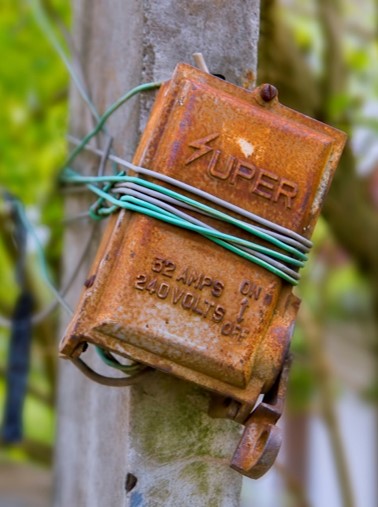As you design your next project, you may ask yourself if you should use a metal enclosure or a plastic polycarbonate enclosure. This is a very valid thought to have.
Often we find companies continue to use metal because they are unaware of the advantages of working with polycarbonate over other materials such as acrylic and glass; and the inherent value in using this versatile thermal set plastic.
Material Comparison
When it comes to the NEMA type ratings, a 4X enclosure is a 4X enclosure when it leaves the factory, regardless of the material. How well the enclosure performs during its service life will determine your return on investment.
Today, polycarbonate is one of the most versatile types of plastic used in industrial applications globally for both indoor and outdoor applications.
Environmental Suitability
The environment in which your enclosure will be used plays a crucial role in determining the suitability of the material. Polycarbonate enclosures are ideal for outdoor applications where visibility is important, such as in industrial or commercial settings. They can withstand exposure to rain, snow, and extreme temperatures without compromising their structural integrity. This makes them perfect for environments that experience fluctuating weather conditions. Stainless steel enclosures, on the other hand, are better suited for harsh environments where corrosion resistance is critical, such as in marine or chemical processing applications. Their ability to resist rust and withstand heavy impacts ensures they remain reliable in the toughest conditions. Consider the environmental conditions your enclosure will face and choose the material that best meets those needs.
Winner: Polycarbonate
Impact and Corrosion Resistance
Polycarbonate can withstand an impact of over 900 psi, and is about 200 times stronger than steel. As a thermoplastic, polycarbonate will flex and return to its original shape, while metal can dent on impact. Once dented, any preventive rust coatings will fail and the underlying enclosure will begin to rust, including stainless steel.
Winner: Polycarbonate
Winner: Polycarbonate
Enclosure Modifications

A stock enclosure does not remain stock for long. At some point, an engineer or technician will alter the box with holes, cutouts, and recesses. These changes are necessary to make the enclosures functional. Metal and polycarbonate respond differently to such modifications.
Drilling a metal enclosure can require special drill bits, and using a drill press, often a nibbler tool is recommended. Replacing either the cabinet or the entire unit may be necessary, costing time and money.
Moreover, the cutting process produces a sharp “corkscrews” of metal and dust containing metal particles. This dust can irritate the eyes. Inhaling the dust can impact respiratory function.
Conversely, modifying polycarbonate produces larger specks of material that are too heavy to become airborne. These specks will not irritate the skin and can be easily swept up or vacuumed. Additionally, if a window is required, this is easily accomplished with a polycarbonate enclosure. Polycarbonate offers many transparent cover options, or can easily install a polycarbonate window.
Winner: Polycarbonate
Weight
Heavier weight equals higher costs. Fuel efficiency, maintenance costs, logistics, installation—all see significant cost reductions in tandem with a decreased part weight. If you were to weigh a metal and polycarbonate enclosure, the plastic box could weigh 6 times less.
The costs associated with higher weight can go well beyond the initial shipping costs from the supplier’s warehouse until the unit arrives at its final destination. Shipping costs can quickly increase the overall product cost—not to mention the additional strain on human resources when carrying and installing heavier enclosures.
These costs are magnified when working with larger sized boxes. Using a polycarbonate enclosure will save money on shipping and human resources right off the bat.
Winner: Polycarbonate
Cost
Polycarbonate costs considerately less than a comparably sized metallic box, with all the factors stated above metallic enclosures, could cost you and your company more in time and money. These possible cost drivers include shipping, potential redoing modifications, and a shorter, less reliable field life.
Winner: Polycarbonate
If you have any questions or want to start increasing your productivity and profits, contact your local Fibox representative to learn more about our polycarbonate enclosing solutions.
Polycarbonate Enclosure Benefits
Polycarbonate enclosures offer several benefits that make them an attractive option for many applications. One of the primary advantages is their high impact resistance, which makes them ideal for use in harsh environments. Polycarbonate enclosures are also lightweight, easy to install, and can be customized to meet specific needs. Additionally, they offer excellent electrical insulation and are resistant to many chemicals. With their transparent material, polycarbonate enclosures provide visibility and are easy to clean. Overall, polycarbonate enclosures are a cost-effective and reliable solution for many industries, offering a blend of durability, flexibility, and practicality.
Selecting the right enclosure for your application can be a daunting task, but by considering a few key factors, you can make an informed decision. First, consider the environment in which the enclosure will be used and the level of protection required. Next, think about the size and shape of the enclosure needed to accommodate your equipment. Finally, consider the material properties and benefits of each option. Polycarbonate offers transparency and impact resistance, while stainless steel provides unmatched strength and corrosion resistance. Once you’ve selected the right enclosure, proper installation is crucial to ensure optimal performance. Follow the manufacturer’s instructions and take necessary precautions to ensure a safe and secure installation.
